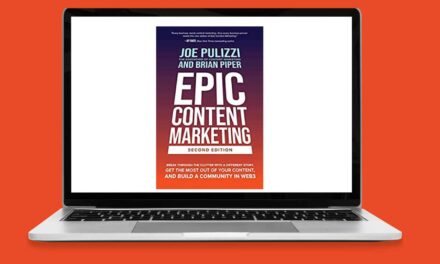Marketing is all about delivering the right message at the right time to the right people. Unfortunately, there are a lot of subjective opinions about what “right” means. In order for marketing to be more effective, strategies must be rooted in objective data.
The Path to Objective Decision Making
We can all agree that objective information is far more useful in marketing than subjective information that may or may not be rooted in truth. But not until recently has objective information been so widely available to small businesses and large organizations alike.
With the majority of the customer buying journey now happening online, data is more accessible than ever before. Learning how to collect and leverage this data will provide opportunities for more informed decision making. Let’s explore some of the different resources and strategies that are available to you:
Website Analytics
Released nearly 15 years ago, Google Analytics changed the game when it comes to understanding who is using your company’s website, where they’re coming from, and what they’re doing. Yet because of its many features, complicated graphs, and dozens of tabs, many small businesses shy away from using it as much as they should.
“From real-time users to behavioural flows all the way to cohort analysis and benchmarking, Google Analytics provides a vast amount of information,” Start Digital explains. “Given how widespread this data is, it takes time to figure out the most beneficial statistics for your business.”
Taking the time to learn about how Google Analytics—or any robust website analytics platform— works is half the battle. Once you’ve figured out how it works, you can extract powerful insights and use the data to make more informed decisions about your website, content marketing, SEO, and even social media marketing.
You ultimately have to determine which data points are most useful for your business, but you’ll likely find the Audience, Acquisition, and Behavior reports to be most valuable. Get it right, and you stand to increase traffic and sales.
Customer Surveys
You can observe a lot about your customers and how they interact with your brand by studying website analytics and filtering through various data reports. However, certain questions and issues require you to go straight to the source.
Customer surveys provide a nice bridge between objective/quantifiable data and subjective/observed opinions. They aren’t foolproof—customers may provide results that aren’t entirely truthful—but they’re helpful in showing you big trends and uncovering ideas that you didn’t know existed.
Much like Google Analytics changed the way businesses collected website data, online survey tools have simplified the customer survey process to a significant degree. Surveys can now be developed in minutes, quickly distributed to participants, and then analyzed and shared for rapid decision making. As a result, brands can make more informed decisions in real-time.
Research Studies
Customer surveys provide quick and useful results when you have a question or issue that needs to be dealt with right away (and with as little fuss as possible). But when it comes to enacting a total rebrand or major marketing campaign, a research study may also be necessary. And to make it effective, you’ll need to follow a documented process.
“The marketing research process is a series of steps used to plan and conduct relevant and informative research for marketing purposes,” Lucidchart explains. “This process starts before the research ever begins, and it covers everything needed to make research effective, from planning to conducting to analyzing—all the way to finally presenting the results.”
Accurate and clean data is obviously necessary in order to get good results. But you also need a method for analyzing the data and organizing it in such a way that the findings are able to spark progress. It’s for this reason that most businesses partner with a research firm to handle the more intricate details.
Balancing the Subjective With the Objective
There’s a time and place for referencing subjective information, trusting your gut, and leveraging personal opinion to make business decisions. However – and that’s a big however – you have to balance it out with strong, objective information and data. When you use both subjective and objective information, you’ll find that you reach better conclusions and enjoy far greater peace of mind.
Hopefully this article has provided you with a concrete idea of how you can find and utilize objective information in the decision making process. As a result, you’ll be able to make more intelligent marketing choices that put your brand in a position to be as successful as possible. Evaluate how your brand is doing and proactively seek out opportunities to grow.






